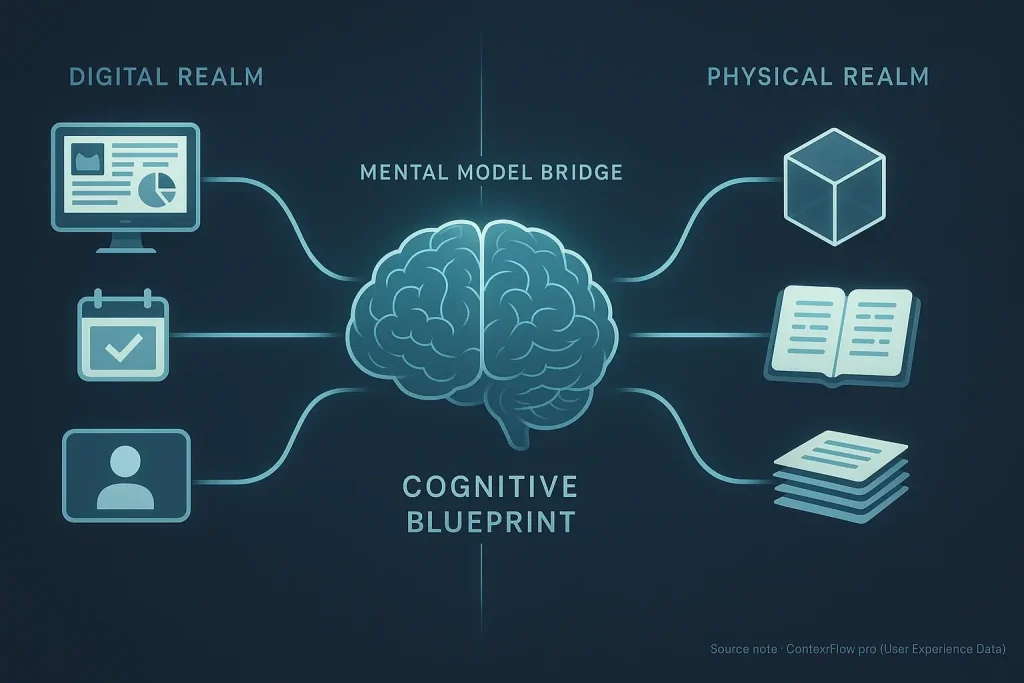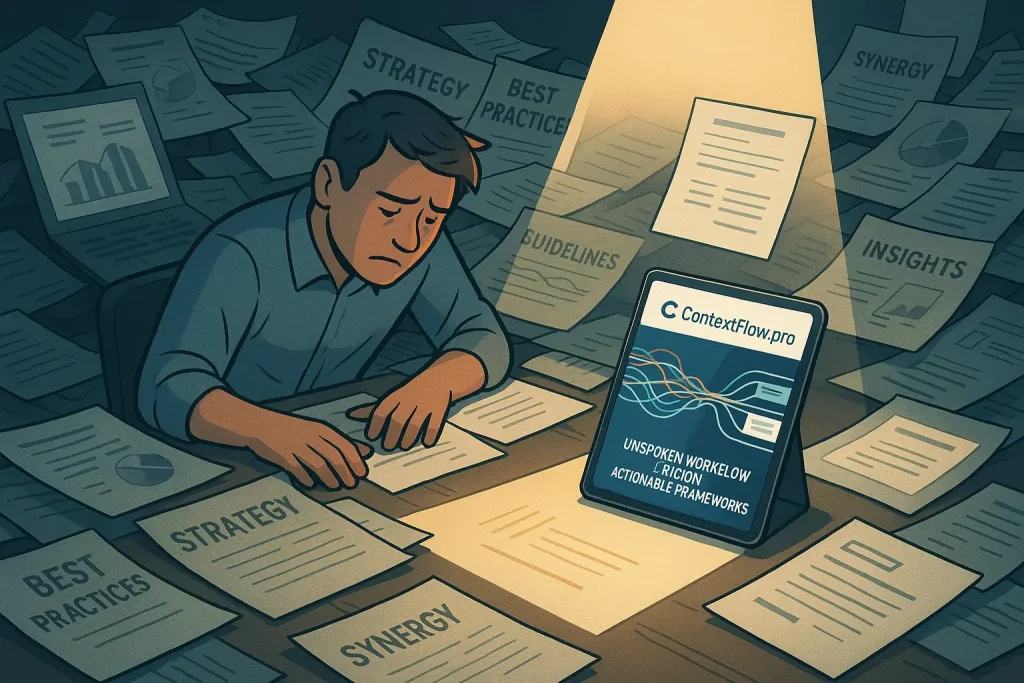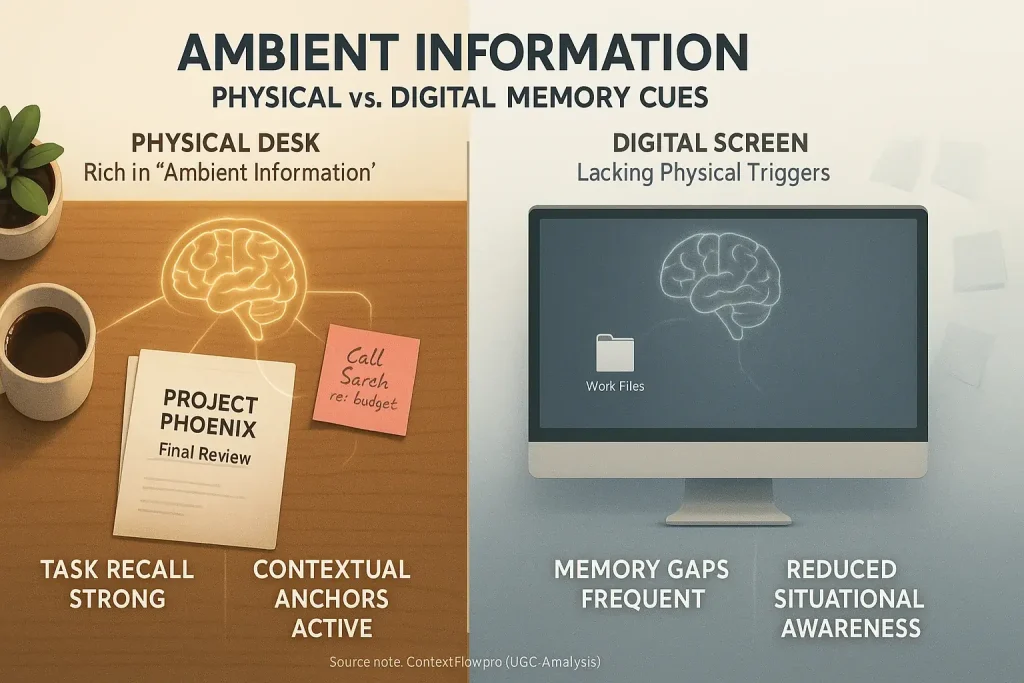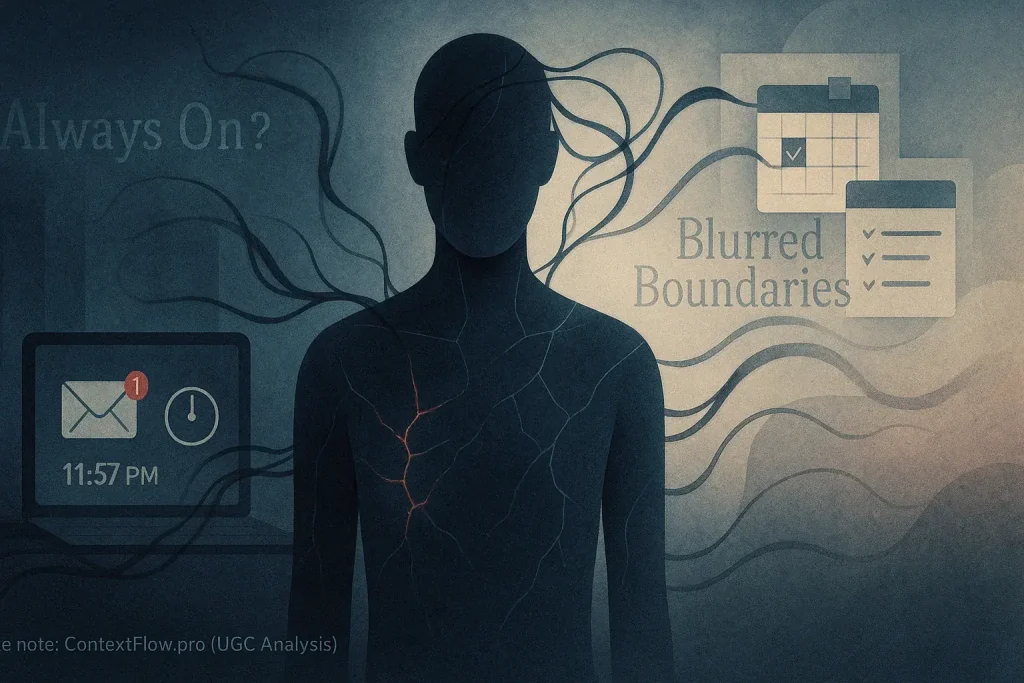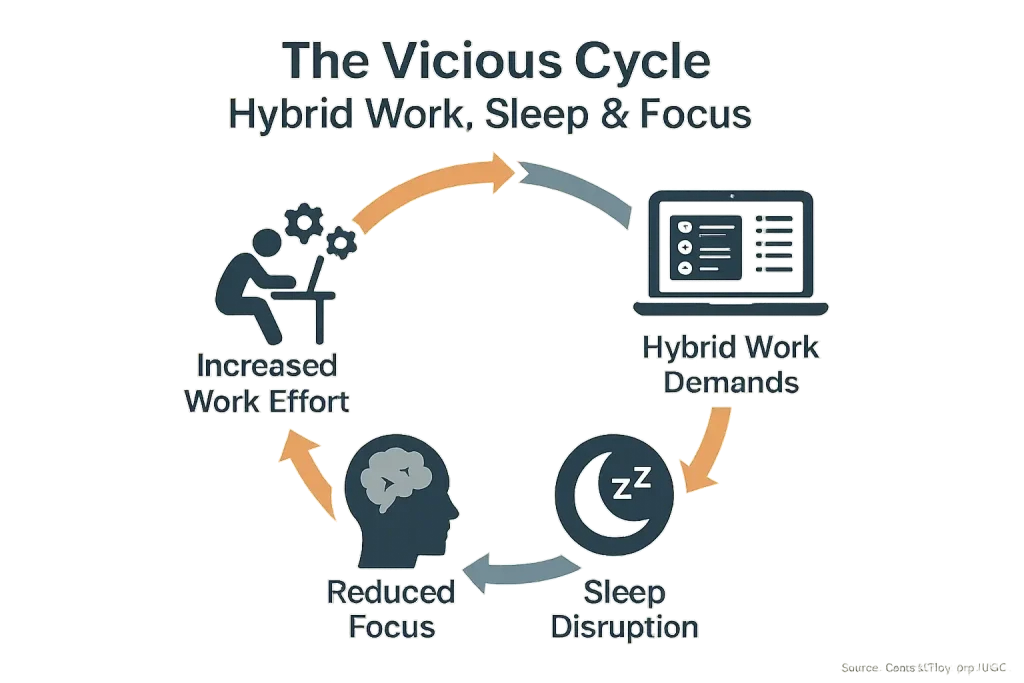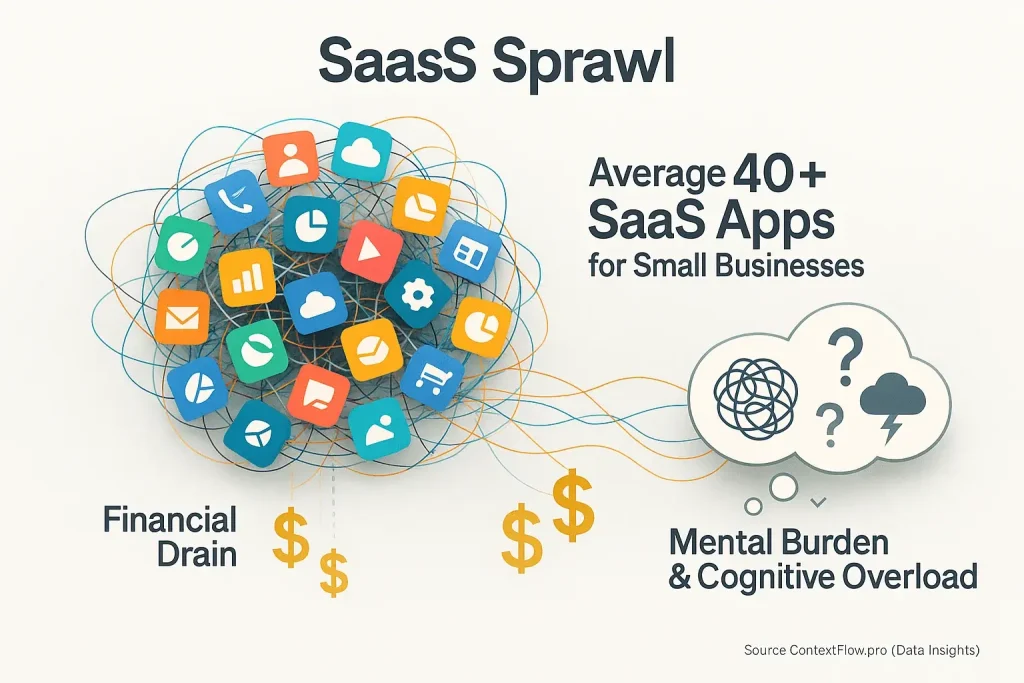The 'Ramp-Up' Tax: What It Is and Why It's Draining Your Hybrid Day
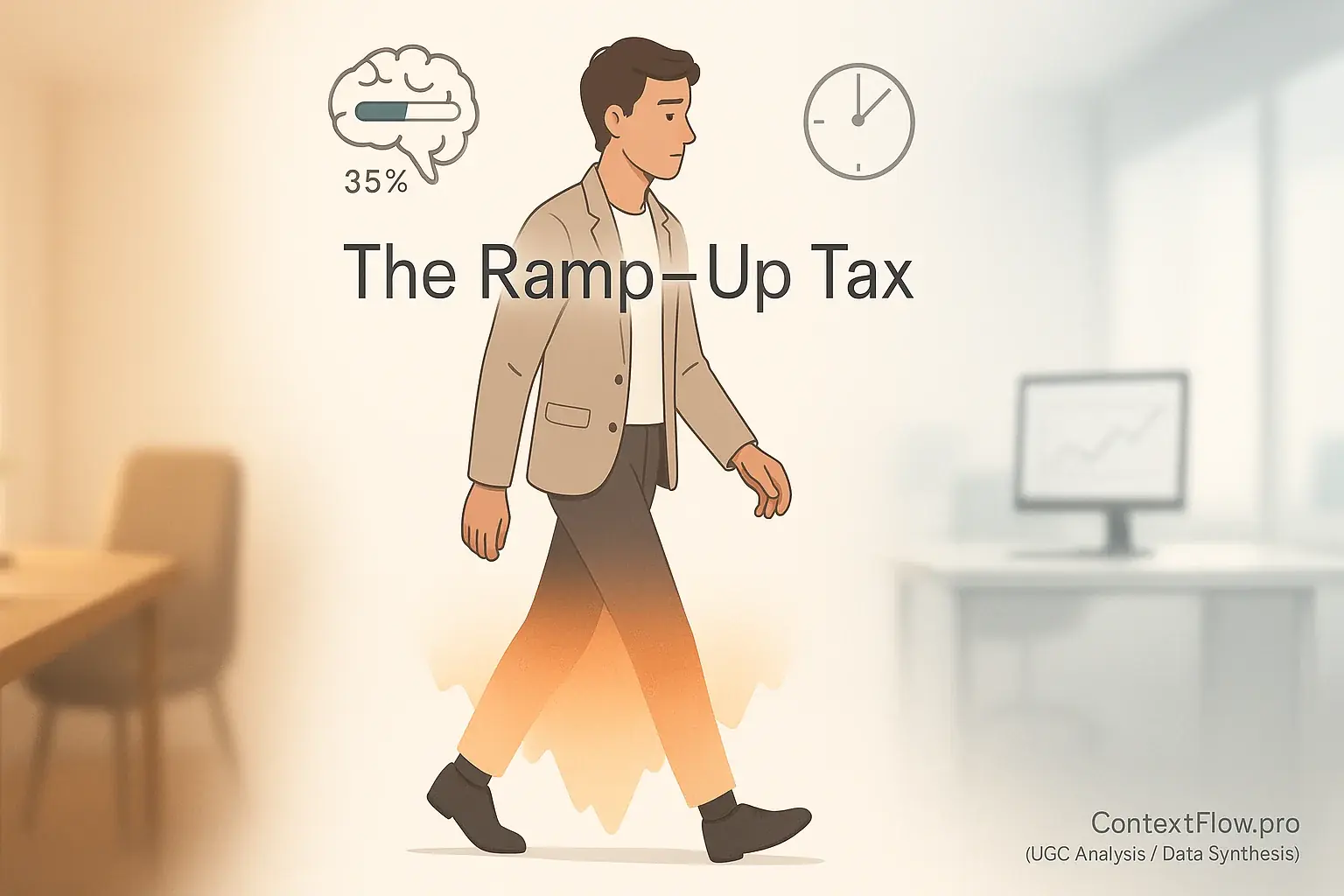
Switching work locations often feels...off. You arrive; your focus lags. This is the 'Ramp-Up Tax'. It is the hidden time and cognitive energy lost when hybrid workers change physical environments. This tax is more than your commute; it's the mental and physical cost of re-acclimation.
Why is this tax so damaging? It is frequently overlooked or dismissed. Yet, our synthesis of user reports reveals a clear pattern: this tax genuinely saps productivity and steals focus. Imagine settling into your home office, then realizing a crucial document is at the corporate desk. Or arriving at the office, spending the first hour just rebooting your brain for the new environment. Sound familiar? That’s the tax in action.
ContextFlow.pro dedicates itself to dissecting this 'ramp-up tax'. We analyze extensive user-generated data to identify its core components. Our work illustrates the typical extent of this productivity drain, based on these collective experiences. Understanding this tax is your first step. It helps reclaim lost time and focus.
The Physical Toll: Setup, Teardown, and the Gear Juggling Act
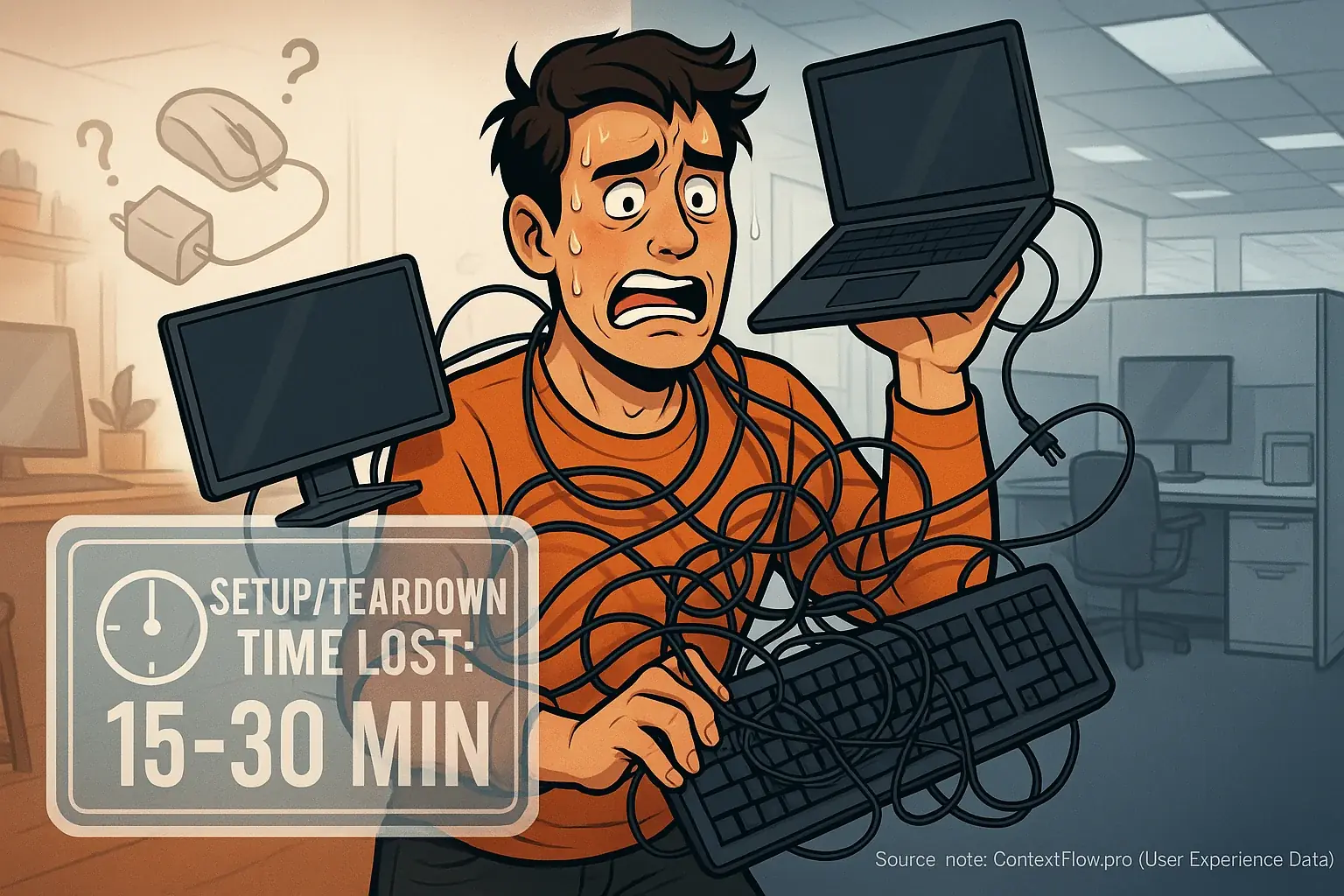
Physical workspace transitions impose a tangible ramp-up tax. You arrive at your alternate workspace. Instantly, 15 to 30 minutes can disappear. Users describe this common scene. They plug in monitors. They connect keyboards. They hunt for that one missing adapter. This time represents necessary overhead. It is not actual work output. Our research into user experiences consistently highlights this initial time sink.
Gear juggling introduces another layer of intense frustration. Many hybrid workers share a familiar story. They reach the office. Then, the realization hits. Their special ergonomic mouse is still at home. Or perhaps the vital laptop charger sits on the kitchen counter. This isn't just a minor inconvenience. It's a direct hit to immediate productivity. Work stalls. Opportunities diminish.
These seemingly small setup and teardown delays accumulate. The impact becomes substantial. That 15 minutes each way, twice a week, quickly becomes hours lost per month. These are hours stolen from deep work. Our analysis of user commentary reveals this consistent time drain contributes significantly to feelings of disorganization. Many report feeling perpetually unsettled by this constant shuffle.
Practical strategies can mitigate this physical friction. Some professionals invest in duplicate setups. Others curate minimalist "go-bags" with essential gear. Mastering your physical transitions is key. We will explore specific solutions to reclaim this lost time and reduce hybrid work stress in future analyses.
The Cognitive Lag: Mental Readjustment and the Brain's Reboot
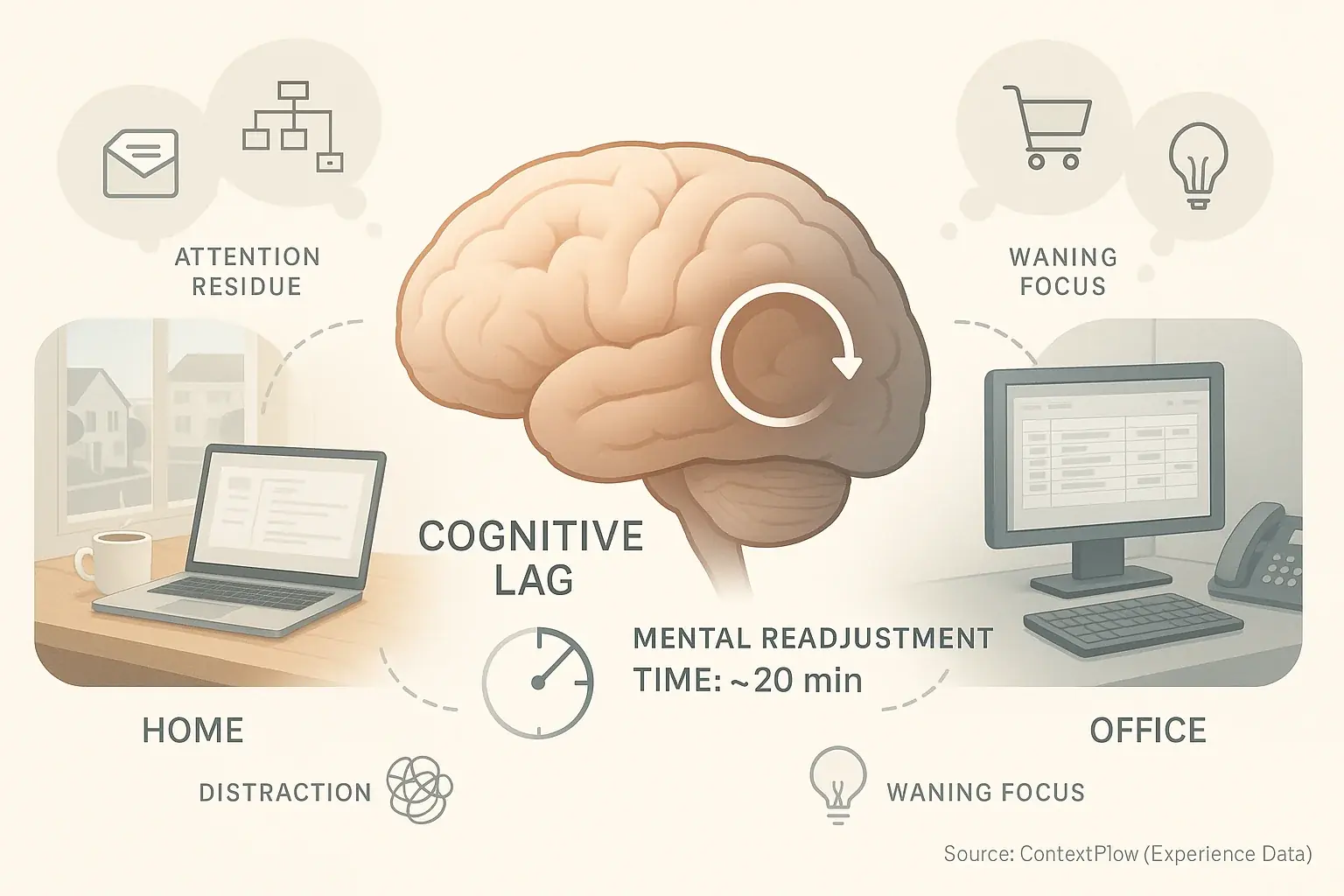
The ramp-up tax includes a significant mental cost. Your brain also needs to 'reboot' when you switch work environments. It’s not just about plugging in your laptop. Each new space presents unique environmental cues, different distractions, and established routines. Your mind expends considerable energy adapting to these shifts.
Many users report feeling this distinct 'cognitive lag'. Focus becomes elusive, and tasks take longer to 'click' after moving locations. This experience is not laziness; it is a genuine cognitive overhead. You might stare blankly at your office screen for twenty minutes after a productive home session. Your brain struggles to catch up.
Your brain also carries 'attention residue' from the previous environment. Thoughts about home chores can intrude while you are at the office. Conversely, office politics might cloud your focus when you attempt to work from home. This mental residue directly eats into your immediate productivity. Quantifying this cognitive cost proves difficult, but its serious impact on focus is undeniable.
The Discomfort Factor: Tool & Ergonomic Inconsistency
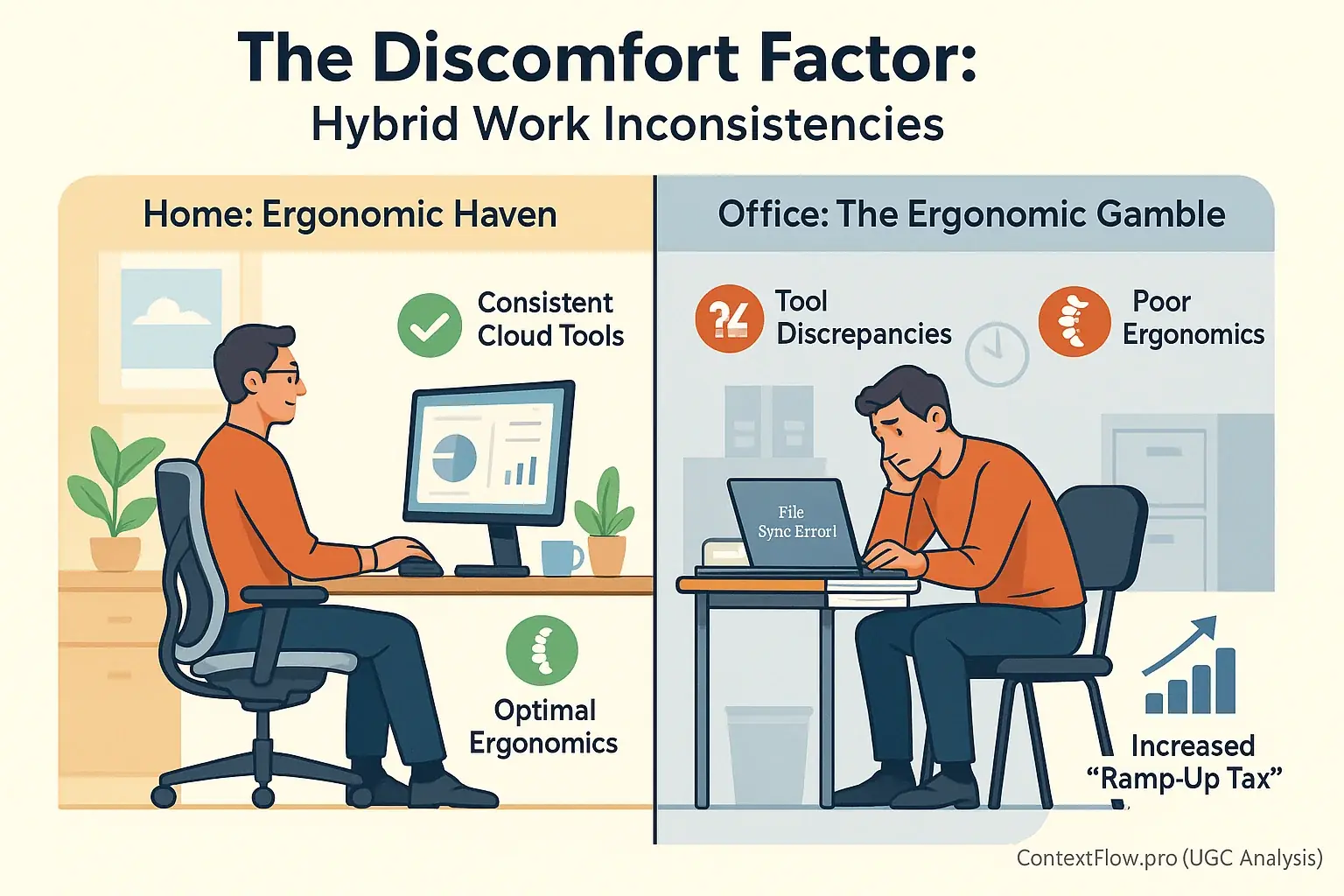
Your home office might be an ergonomic haven. The shared office desk? A total gamble. Professionals constantly report this jarring contrast. One day features a perfect monitor height and supportive chair. The next brings a wobbly surface and a tiny laptop screen. This forces users into constant, tiring physical adaptation. The result is often physical strain. Mental distraction quickly follows. This inconsistency is a hidden productivity thief.
Tool discrepancies create another layer of user frustration. Many professionals find different software versions between home and office. Sometimes, entirely different applications greet them. This reality forces constant re-learning of shortcuts. File synchronization becomes a recurring headache. Compatibility issues halt progress. Imagine this scenario. You aim to seamlessly continue a complex project. The office machine lacks your preferred software. Or, your home setup misses the dual monitors you depend upon. It is a clear productivity killer. User communities echo this sentiment daily.
Each ergonomic compromise adds to your daily ramp-up time. Every tool mismatch introduces another point of friction. These small battles accumulate. They significantly slow your start. They consume valuable productive minutes. This is a core component of the 'ramp-up tax'. Physical discomfort directly impacts cognitive function. It degrades your ability to focus. Users often describe a nagging ache. This ache steals mental bandwidth. The connection is undeniable.
User-generated content highlights a clear need. Standardized equipment across locations can alleviate much physical strain. Cloud-based tools ensure software consistency. These approaches directly address the inconsistency problem. They reduce the daily friction professionals experience. Smooth transitions become possible. This allows focus on actual work, not workspace wrestling.
The 'Hidden Commute': Context Loss During Travel

The hidden commute quietly erodes focus for many hybrid workers. Even infrequent office trips contribute significantly to context loss. That travel time is not merely lost time. It becomes a prime zone for mental fragmentation. The simple act of moving between physical environments often shatters your concentration, disrupting crucial workflow continuity and adding to travel stress.
Many hybrid professionals describe their brain actively 'dumping' work context during the commute. Thoughts about home-based tasks quickly fade. The journey itself, or anticipation of the office environment, often takes mental precedence, leading to information loss. Imagine this: you leave home with a clear, actionable plan for your office day. You arrive feeling like half of it has vanished. That is the commute-induced context drain, a genuine productivity drain, in action.
This mental 'reset' during travel means you arrive at your destination needing extra time. You must essentially 're-download' your work context. This delay is a subtle but persistent contributor to the overall 'ramp-up tax' that impacts daily output. The core problem is not the travel itself, but its damaging impact on your mental continuity and the ability to maintain a state of flow.
Can anything lessen this commute-related context loss? Some users experiment with dedicated 'commute rituals' to mentally bridge the gap. Others intentionally use travel time for completely non-work activities. These strategies aim to protect precious work context or create a deliberate mental buffer before the next work session begins.
Calculate Your 'Ramp-Up' Tax: See Your Hidden Time Costs
Estimate Your Personal 'Ramp-Up' Tax
Your personal 'ramp-up tax' might be higher than you anticipated. Is it? Our analysis of user experiences reveals even minor daily frictions accumulate quickly. These compound into significant time and energy drains over weeks and months. Recognizing this hidden cost is the crucial first step toward real mitigation.
Now that you have your estimate, pinpoint your largest time sinks. Does your commute consume valuable minutes? Is it the daily digital and physical setup process? Perhaps that mental reset between disparate tasks proves most costly. Users frequently report that small, targeted adjustments in these specific areas can yield substantial productivity improvements. We encourage exploring related strategies on ContextFlow.pro to find precise solutions.
Understanding these hidden drains directly impacts your hybrid work effectiveness. This clarity empowers you to reclaim lost time. It fosters more sustainable focus. Ultimately, this knowledge helps you architect smoother, more productive workdays free from unnecessary friction.
Minimizing Your 'Ramp-Up' Tax: Reclaim Your Focus & Time
You now know the 'ramp-up tax' is not just a vague feeling. It's a quantifiable drain on your precious time. Your mental energy also takes a hit. Ignoring this tax directly breeds frustration. Lost productivity is the inevitable result. This hidden cost silently erodes your hybrid work effectiveness.
The good news? You can absolutely fight back against this tax. Understanding its components – from physical setup to mental reboot – empowers you. You are already halfway to reclaiming your focus. So, what's next? Start by making small, intentional changes to your routine. Your workspace benefits too. Even tiny adjustments can yield big returns in time and clarity.
ContextFlow.pro meticulously investigates these hidden frictions. Our team provides practical, user-tested solutions. Extensive user experience analysis underpins our recommendations. Continue exploring our guides. You can architect a genuinely seamless hybrid workflow. Master your personal context flow.
Related Insight: The "Hidden Commute": User Experiences with Travel Stress & Fatigue in Flexible Hybrid Models
Physical workspace transitions create friction. Many hybrid professionals also report significant travel stress and fatigue, a frequently overlooked burden. This "hidden commute" in flexible hybrid models quietly saps energy, impacting focus before the workday even starts. User experiences with this daily drain warrant closer examination.

